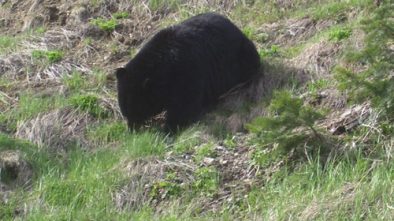Game Scouting Camera Setup and Selection Tips
Game scouting cameras allow you to have a clear picture of what is happening in your favorite hunting spots without the need for your continued presence in the woods. It is an excellent scouting tool to provide you with a pictorial record of game movement in its area of coverage.
A game-scouting camera can be set up to assess a fresh spot or monitor a scrape. It can be set up to keep a watch over what is coming to a feeder. When it is not certain as to what time of the day game animals move in to feed or to bed, a game scouting camera can be programmed to take pictures or video recordings throughout the day and night. Alternatively, it is flexible enough to be programmed to click only during the daytime/nighttime. There are delay option settings that allow camera operation to be programmed for varied time periods to elapse between each click. This way the number of photographs taken can be controlled to minimize chances of too many/few photos of the same animal during its visit to a particular spot.
A good game-hunting camera can maximize your scouting information for a game area while allowing you to minimize your presence that can contaminate the territory with human scent and scare a buck or doe away. It can help you locate the ideal place for a climbing stand at the opening of the hunting season.
Game hunting cameras have become part of standard equipment for today’s hunters and are no more considered as technological excess. With the market flooded with products from various manufacturers every hunter is offered a wide selection of equipment of different specifications to suit his/her choice
Once you acquire a game-scouting camera where to place it assumes utmost importance. For example, when scouting deer, the best way to ensure the right location is to place it near some place to which they are attracted, like scrapes, mineral licks, and food plots and well used trails. As most game scouting cameras are designed to place date and time on the photographs that are clicked, it becomes very easy to identify the time of the day during which the animal shows up at the particular hotspot.
To achieve optimal results, it is advisable that you follow the following tips to while setting up a game scouting camera.
- Place the camera in a manner that it does not face the rising or the setting sun.
- Make sure that you remove any weeds in front of the camera to avoid pictures of weeds swaying in the breeze instead of the game animal(s).
- Place the camera at a distance that is neither too close or too far from wherever you expect your game animal to travel. For example, placing a camera on a tree at 3 to 4 feet from a trail will be too close while a distance of 30 feet or so will be too much as it would not be within the range of the camera flash.
- Use a digital game-scouting camera. It will permit you to instantly view the results without waiting while your film roll is developed and prints made along with many other advantages as well. It will be of interest to note that there are digital game scouting cameras that use the US cellular network for wireless transfer of the pictures taken by the camera to the world wide web allowing you to review them from anywhere in the world. A removable memory card lets traditional non-wireless image retrieval. These are usually self-contained units and do not require any other attachments like cell phones or other gadgetry to function.
- Use fresh batteries. Always. It would be wise to use good quality batteries that have not been used before. Not getting pictures due to dead batteries can be very frustrating. Rechargeable batteries offer good economy.
- For security reasons buy a game-scouting camera that has a locking arrangement to deter someone interested in walking away with it.
Game scouting cameras can be selected from brands like StealthCam, Moultrie, BuckeyeCam, Atlantis, Wildview, Cuddeback, Trailback, Trailtimer, SmartScouter, CamTrakker and Leaf River among other brands.



